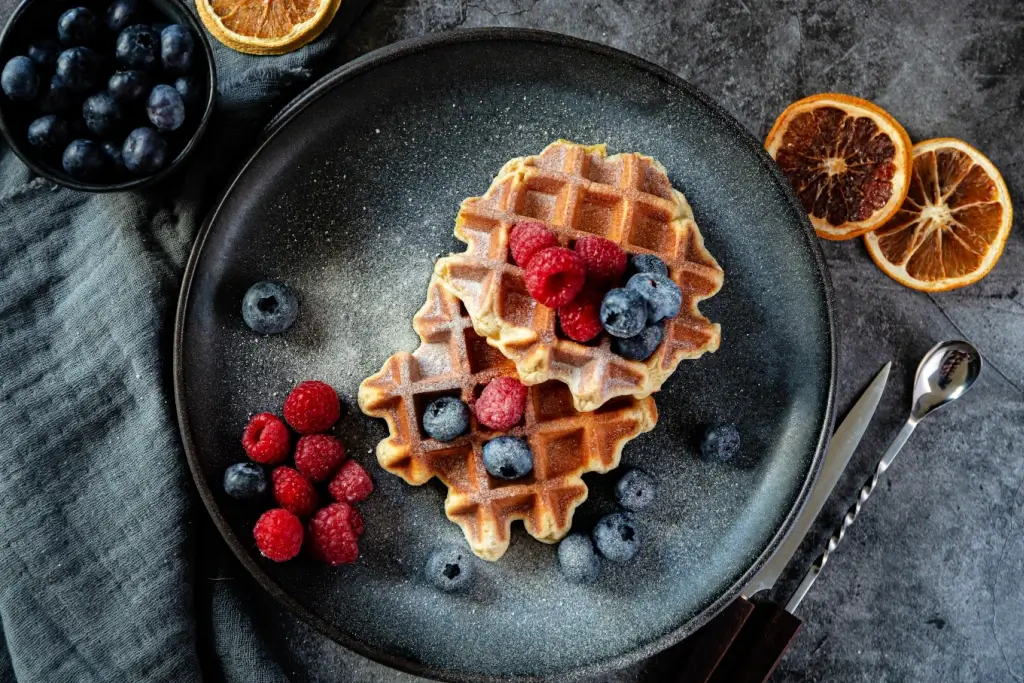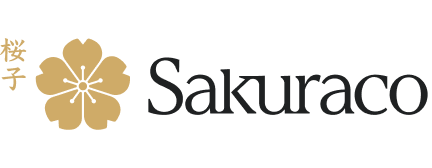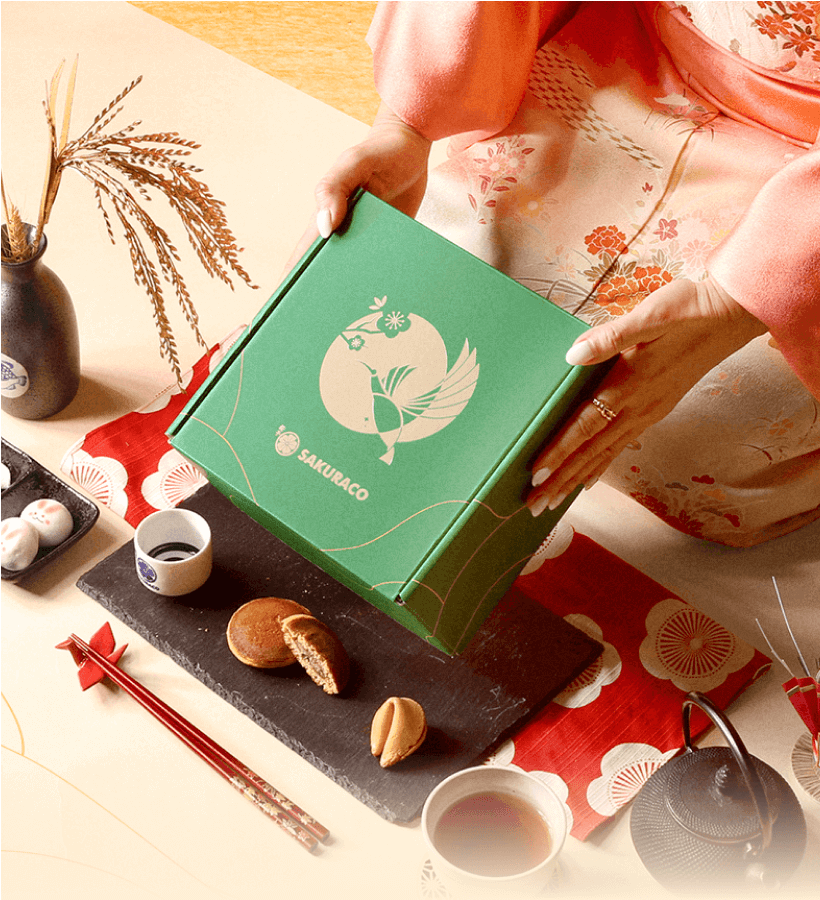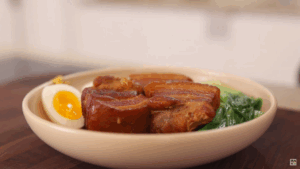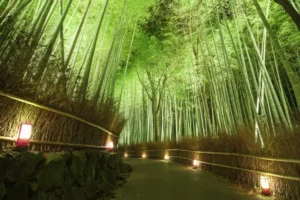Belgian waffles may have originated in Europe but have found an enthusiastic following in Japan. Their crispy, caramelized exterior and fluffy interior have made them a popular treat, whether as a grab-and-go snack or a carefully plated dessert in stylish cafés.
They’ve also become popular in Japan’s dessert culture. How did they get to Japan? Why are they so well-loved? The story of these waffles is a fascinating example of culinary exchange. It also shows adaptation and appreciation for craftsmanship.
Table of Contents
ToggleWhat are Belgian waffles?
Belgian waffles are known for their deep pockets, airy texture, and rich flavor. The two most common types are the Brussels waffle and the Liège waffle. Brussels waffles are rectangular, light, and crispy, often served with powdered sugar, fresh fruit, or whipped cream. Liège waffles, on the other hand, are denser and chewier, made with a dough enriched with butter and pearl sugar. The pearl sugar caramelizes as they cook, creating a crispy, golden-brown crust with a sweet, slightly crunchy bite.
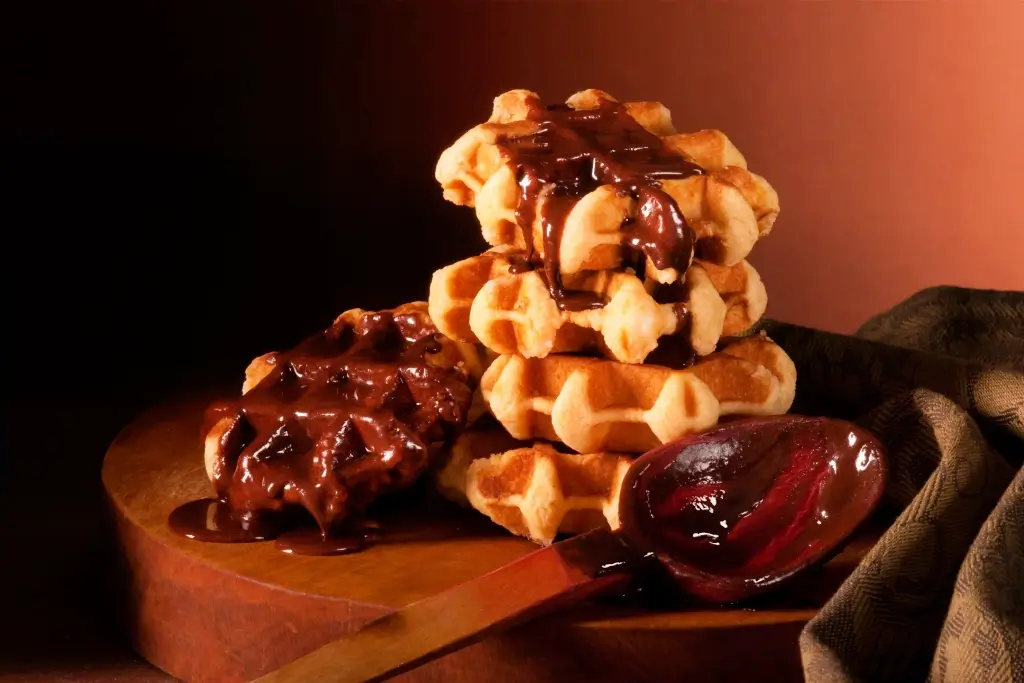
In Japan, Liège waffles have become the more popular choice because they’re easy to eat on the go. Brussels waffles are often served with toppings. Liège waffles are naturally sweet, so they don’t need syrup. The caramelized sugar in the dough provides all the sweetness needed.
This makes them ideal for busy people who want a quick snack. Their chewy and crispy texture is also appealing. It aligns with Japan’s love for contrasting textures in food. Examples include dorayaki’s crispy shell and soft filling. Another example is the crunch of taiyaki with sweet red bean paste.
How do you make Belgian waffles?
Belgian waffles might seem complicated, but they’re easy to make. The recipe calls for flour, yeast, eggs, butter, and pearl sugar. Yeast is the key ingredient that gives them their light, fluffy texture. The dough must rise for several hours before mixing in the pearl sugar to spread evenly. Then, it’s shaped into small dough balls and cooked on a hot waffle iron, where the sugar caramelizes into a crispy, golden shell. Unlike American waffles, which use a pourable batter, Liège waffles must be kneaded and shaped, making them more like a pastry than a typical breakfast dish.
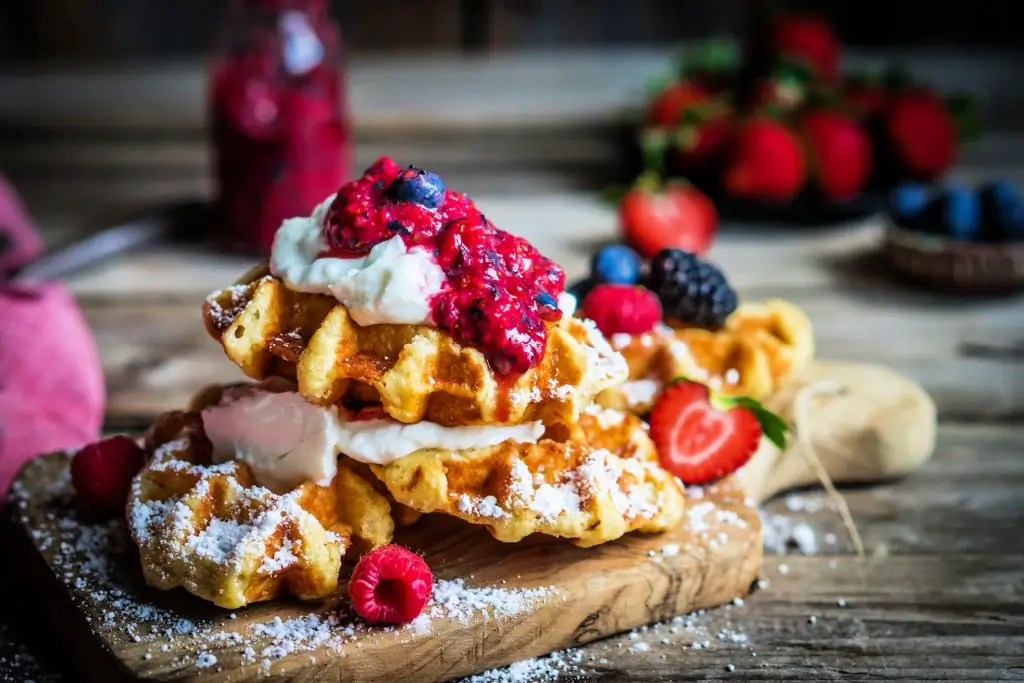
Many Japanese bakeries and cafés have perfected this method, sometimes adding their unique twists. Some incorporate matcha powder for a subtle bitterness that balances the sweetness, while others use kinako, a roasted soybean flour, for a nutty depth of flavor. Chocolate, chestnut, and black sesame variations also appear frequently, showcasing how Japan seamlessly blends foreign influences with its own culinary traditions.
Are you looking for great snacks like Belgian waffles? Sakuraco delivers traditional Japanese snacks, teas, and sweets from local Japanese makers directly to your door so you can enjoy the latest delicacies directly from Japan!
Where can you get Belgian waffles in Japan?
Belgian waffles are a popular treat in Japan. They can be found in specialty cafés, bakeries, and some convenience stores. They can be freshly made or prepackaged and come in various flavors and styles, making them easy to enjoy anytime.
Manneken
One of Japan’s most well-known places to get Belgian waffles is Manneken, a shop that has been serving these sweet treats since 1986. Inspired by a famous statue in Brussels, this chain quickly became Japan’s go-to place for authentic Liège waffles. Their waffles are fresh daily and come in various flavors, including classic butter, almond, and chocolate.
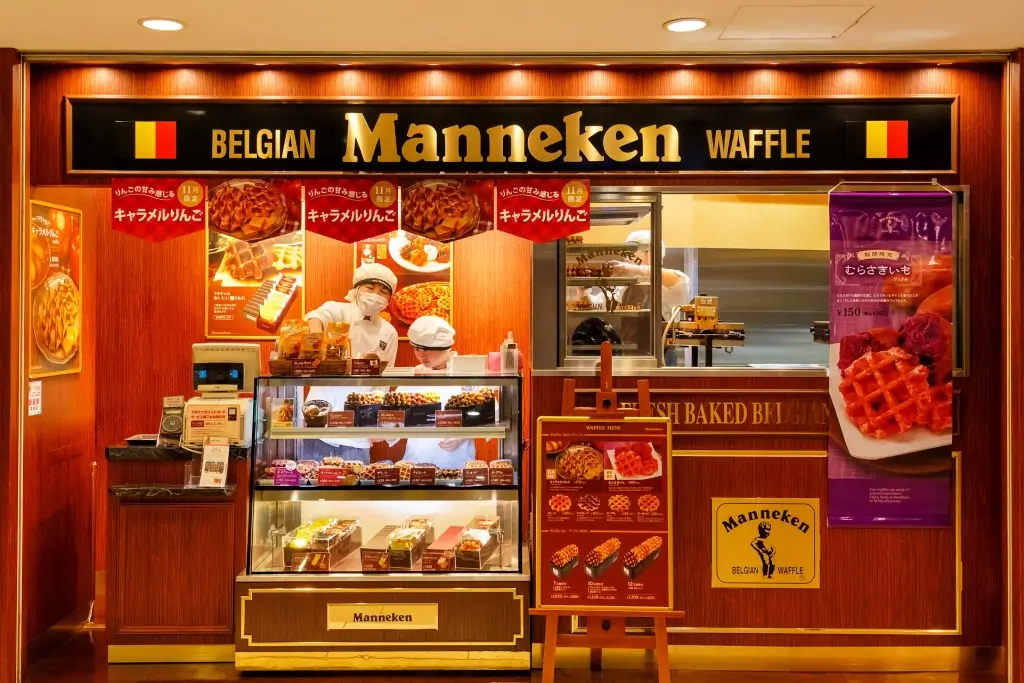
Manneken’s Tokyo Station branch is especially popular, with customers often grabbing a warm waffle before catching a train. The brand’s ability to maintain the authenticity of Belgian waffles while catering to Japanese tastes has made it a lasting favorite.
Mr. Waffle Lumine Shinjuku
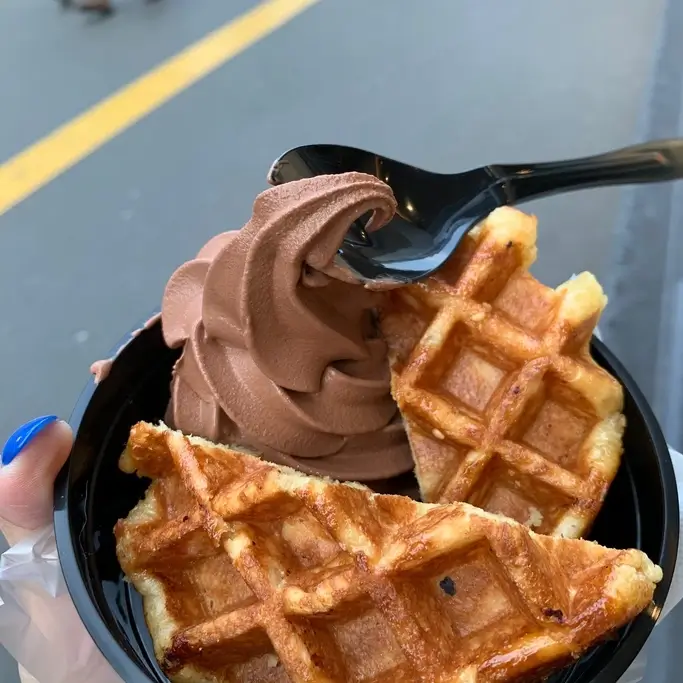
Another must-visit spot is Mr. Waffle, located inside Lumine Shinjuku. This small but beloved shop specializes in handmade Liège waffles that perfectly balance crispiness and chewiness. While classic flavors like butter and cinnamon are always available, Mr. Waffle also offers uniquely Japanese variations, such as matcha and black sesame. The shop’s intimate setting makes it an excellent place for a quiet moment of indulgence when shopping or commuting.
Koenji Waffle + Deco
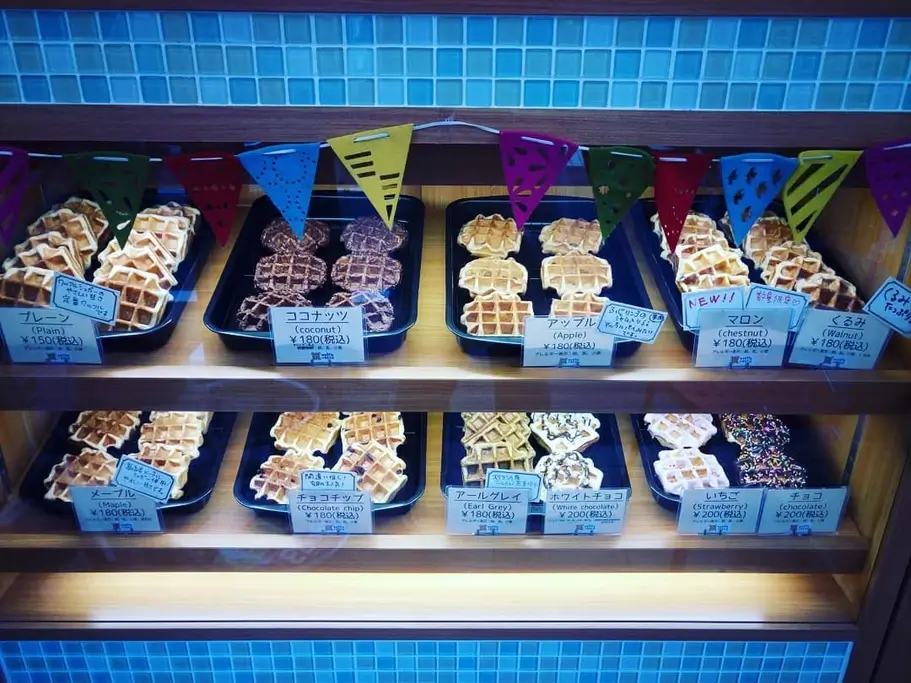
Koenji Waffle + Deco offers beautifully decorated versions of this European treat for those looking for a more artistic take on Belgian waffles. Located in the trendy Koenji neighborhood, this café elevates waffles into full-fledged desserts, with elaborate toppings like fresh fruit, whipped cream, and edible flowers. The strawberry shortcake waffle, with layers of fluffy waffle, fresh strawberries, and vanilla cream, is a favorite among visitors. The yuzu honey waffle, which combines traditional Japanese citrus flavors with European pastry techniques, is another standout.
R.L. Waffle Cafe
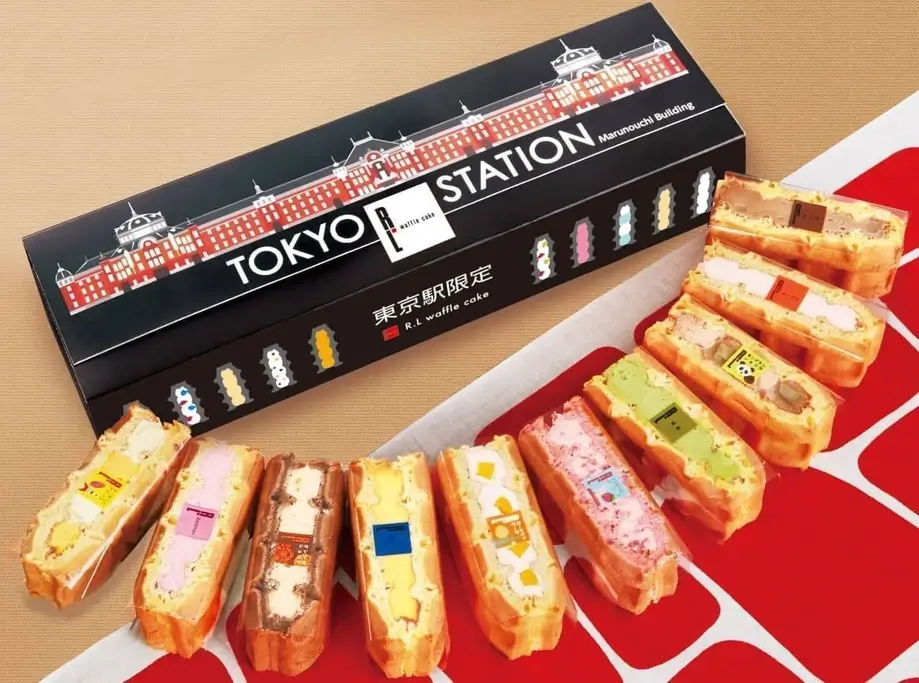
R.L. Waffle Café, originally from Kobe, offers a stylish twist on Belgian waffles. Instead of the traditional Liège waffle shape, R.L. specializes in thin, sandwich-style waffles filled with flavored creams such as custard, matcha, and chocolate mousse. The café is known for its beautifully arranged afternoon tea sets, where customers can enjoy a selection of waffle sandwiches alongside tea or coffee. This lighter, more delicate interpretation of Belgian waffles appeals to those who prefer a less dense dessert.
Why do people in Japan love Belgian waffles?
People in Japan love Belgian waffles because they are both convenient and delicious. Their crisp, caramelized exterior and soft, chewy interior provide a satisfying texture contrast that aligns with Japan’s appreciation for well-balanced flavors. Liège waffles, in particular, are easy to eat on the go, making them a perfect snack for busy commuters and shoppers. Their natural sweetness means no extra toppings are needed, making them a simple yet indulgent treat.
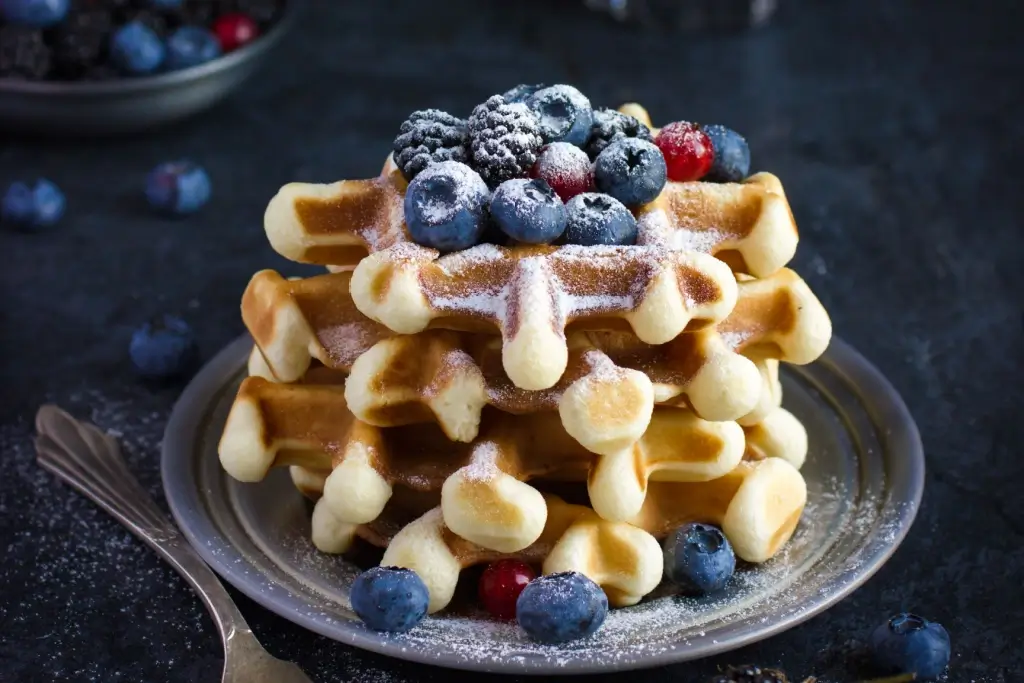
Belgian waffles have become a beloved part of Japan’s desert landscape, proving that even a treat from worldwide can find a home when it resonates with local tastes. Have you tried Belgian waffles in Japan? Do you have a favorite shop or unique topping combination? Share your thoughts in the comments below! We’d love to hear about your waffle adventures!


